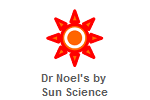1kg Charcoal Activated Powder DCL320 Food Grade
Product Code: swofvqt
Activated carbon, also called activated charcoal, is a form of carbon commonly used to filter contaminants from water and air, among many other uses. It is processed (activated) to have small, low-volume pores that increase the surface area available for adsorption (which is not the same as absorption) or chemical reactions. Activation is analogous to making popcorn from dried corn kernels: popcorn is light, fluffy, and its kernels have a high surface-area-to-volume ratio. Activated is sometimes replaced by active.
Due to its high degree of microporosity, one gram of activated carbon has a surface area in excess of 3,000 m2 (32,000 sq ft) as determined by gas adsorption. Charcoal, before activation, has a specific surface area in the range of 2.0–5.0 m2/g. An activation level sufficient for useful application may be obtained solely from high surface area. Further chemical treatment often enhances adsorption properties.
Activated carbon is usually derived from waste products such as coconut husks; waste from paper mills has been studied as a source. These bulk sources are converted into charcoal before being ‘activated’. When derived from coal it is referred to as activated coal. Activated coke is derived from coke.
Methane & Hydrogen Storage
Air purification
Capacitive Deionization
Super capacitive swing adsorption
Solvent Recovery
Decaffeination
Gold Purification
Metal extraction
Water Purification
Medicine
Sewage treatment
Air Filters in Respirators
*Please note this comes in a form of a Fine Powder*
Wood Based High Activity
Food Grade
Molecular Weight: 12.01
Molasses Decolour: >500 (TM3)
Moisture as packed: Particle Size: 60-86 (Total Surface Density( N2 BET Method): <1000m3/g
Methylene Blue: Ash: <4% w/w
Water Extractables: <0.5%
Hazard Phrases: Not considered harmful under normal laboratory conditions
Cas No: 7440-44-0
Einecs No: 231-153-3
Due to its high degree of microporosity, one gram of activated carbon has a surface area in excess of 3,000 m2 (32,000 sq ft) as determined by gas adsorption. Charcoal, before activation, has a specific surface area in the range of 2.0–5.0 m2/g. An activation level sufficient for useful application may be obtained solely from high surface area. Further chemical treatment often enhances adsorption properties.
Activated carbon is usually derived from waste products such as coconut husks; waste from paper mills has been studied as a source. These bulk sources are converted into charcoal before being ‘activated’. When derived from coal it is referred to as activated coal. Activated coke is derived from coke.
Methane & Hydrogen Storage
Air purification
Capacitive Deionization
Super capacitive swing adsorption
Solvent Recovery
Decaffeination
Gold Purification
Metal extraction
Water Purification
Medicine
Sewage treatment
Air Filters in Respirators
*Please note this comes in a form of a Fine Powder*
Wood Based High Activity
Food Grade
Molecular Weight: 12.01
Molasses Decolour: >500 (TM3)
Moisture as packed: Particle Size: 60-86 (Total Surface Density( N2 BET Method): <1000m3/g
Methylene Blue: Ash: <4% w/w
Water Extractables: <0.5%
Hazard Phrases: Not considered harmful under normal laboratory conditions
Cas No: 7440-44-0
Einecs No: 231-153-3
Product Code: swofvqt
Product Condition: New
weight: 1.0kg

Updating Order Details
Please do not refresh or navigate away from the page!
No Reviews Posted Yet - be the first!


